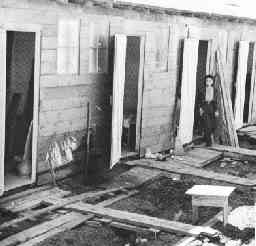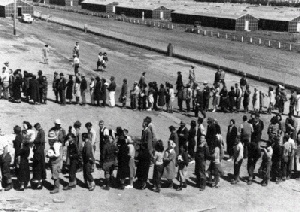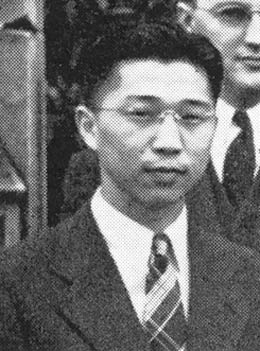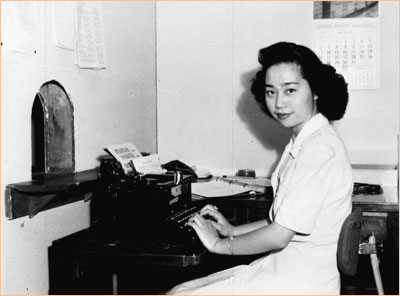The lecture notes are here. The live chat is here.
The Executive Powers III – Detention
- Ex Parte Quirin (444-454).
- Korematsu v. United States (454-468).
- Authorization for Use of Military Force (434-435).
- Hamdi v. Rumsfield (468-475).
Pictures of these cases are below the jump.
Ex Parte Quirin
In Ex Parte Quirin (1942), the Supreme Court upheld the constitutionality of the military tribunal that held a trial for eight Nazi saboteurs who washed up on the shores of the United States. This case was decided on a super-fast schedule. It was argued on July 29 and 30, 1942, with a decision on July 31, 1942. An opinion justifying the order was issued on October 29, 1942. The Saboteurs were tried between July 8 and August 1 inside the DOJ building in Washington. Two days after the trials finished, on August 3, all eighty were found guilty and sentenced to death. FDR would commute the death sentences of two of the men who aided the government in capturing the others. The other six, including Richard Quirin, were electrocuted on August 8–barely one week after the Supreme Court upheld their conviction.
Professor Joel Samaha has collected photographs of all eight saboteurs.
First, here is the Long Island Group. From left to right: Dasch (group leader), Burger, Quirin, and Heink.
Second, here is the Ponte Vedra, Florida Group. From left to right: Kerling (Group Leader), Haupt, Thiel, and Neubauer.
Here is Quirin and Burger’s mug shots.
Here is a (grainy) photograph of the trial, which took place inside the DOJ building in Washington, D.C. (The federal court down Pennsylvania Avenue was open for business).
Here is an announcement of the electrocutions:
And here is the mass grave for the six executed Nazis in Blue Plains Potters Field in Anacostia, Washington, D.C..
In memory of agents of the German Abwehr Executed August 8, 1942. Herbet Hans Haupt. Heinrich Harm Heinck. Edward John Kerling. Hermann Otto Neubauer. Richard Quirin. Werner Thiel.
Korematsu v. United States
This is a young Fred Korematsu.

This is Fred Korematsu later in life.

This is an announcement the United States Government posted, ordering “all persons of Japanese ancestry” to be rounded up.
It says:
Pursuant to the provisions of Civilian Exclusion Order No. 33, this Headquarters, dated May 3, 1942, all per- sons of Japanese ancestry, both alien and non-alien, will be evacuated from the above area by 12 o’clock noon, P. W . T., Saturday, May 9, 1942.
No Japanese person living in the above area will be permitted to change residence after 12 o’clock noon, P.W.T., Sunday, May 3, 1942, without obtaining special permission from the representative of the Commanding General
The Civil Control Station is equipped to assist the Japanese Population affected by this evacuation in the following ways:
- Give advice and instructions on the evacuation.
- Provide services with respect to the management, leasing, sale, storage or other disposition of most kinds of
property, such as real estate, business and professional equipment, household goods, boats, automobiles and livestock.
- Provide temporary residence elsewhere for all Japanese in family groups.
- Transport persons and a limited amount of clothing and equipment to their new residence.
Here is a piece of U.S. Government propaganda explaining the “relocation” and do the “job as a democracy should. With consideration.”
Fast-forward to 12:30 when the narrator says there are no constitutional problems with the internment.
Here is a map of the “relocation centers” and camps.
 The San Francisco Examiner announces the “Ouster of all Japs in California near.”
The San Francisco Examiner announces the “Ouster of all Japs in California near.”
This is a so-called “temporary camp” or “assembly center” that were set up in public places, like fairgrounds, before the Japanese-Americans could be transported to the “Detention centers” dubbed “Relocation Centers.”
This is the Topaz Internment Center in Utah, where Fred Korematsu was sent.
Here are Americans locked up in internment camps.
Another photographed of interned Americans.
Here are Americans being rounded up on busses to the middle of the Utah desert.
Here is Eleanor Roosevelt at an internment camp.
This great picture contains a meeting of Fred Korematsu, Minoru Yasui, and Gordon Hirabayashi, who also had companion cases before the Supreme Court.
And here is Fred Korematsu posing with Rosa Parks.
In 1990, Korematsu received a redress letter and a reparations check for his internment.
President Clinton would Korematsu the Presidential Medal of Freedom in 1998.
Korematsu passed away in 2005.
The lead plaintiff in a related case was Gordon Hirabayashi. In Hirabayashi, the Court upheld curfews directed towards Japanese Americans because the nation was at war with Japan.
And this is Mutsuye Endo.
Credit to the Asian American Bar Association of the Greater Bay Area.
Hamdi v. Rumsfeld
This is Yaser Esam Hamdi in prayer at Camp X-Ray, 4/4/2002.
Here is Hamdi after he was captured in Afghanistan on December 2, 2001.
This is Secretary of Defense Donald Rumsfeld, whom Hamdi sued for his release.
This is Camp X-Ray at Guantanamo Bay, Cuba.
This is Camp Delta.
These are detainees being processed in a temporary detention facility on January 11, 2002.
Here is a photograph of detainees praying.
Here is a photo of detainees playing soccer.





































